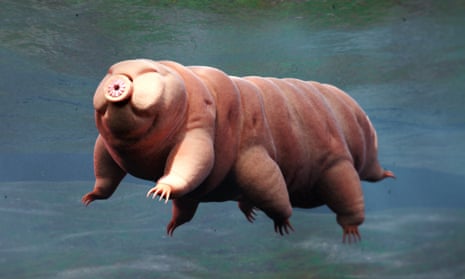Cold
Remains of the minuscule organisms known as tardigrades have been discovered in a subglacial Antarctic lake. The creatures, ranging in size from 0.1mm to 1.5mm, are often called water bears or moss piglets. The remains were found when scientists drilled a kilometre under the ice; previously, only microbes have been found in these extreme conditions.
Aridity
Tardigrades, present in many habitats, can survive in other tricky circumstances. Research in the journal Molecular Cell describes how in dry conditions they coat themselves in glass-like proteins (vitrification). Having dried out cocooned in this way, they need only rehydrate, sometimes decades later, and they live once more.
Heat
The coma-like state tardigrades enter in desiccation is known as cryptobiosis and in it they have remarkable powers of endurance. In his book The Hidden Powers of Animals, Dr Karl Shuker claims that not only have cryptobiotic tardigrades been frozen in liquid helium to -272C (a degree above absolute zero): they have also been heated to over 149C. In both instances, the tardigrades rehydrated and lived.
Space
In 2007, tardigrades became the first creatures to survive exposure to space. They coped with subzero temperatures, solar winds and exposure to a vacuum for days, where human beings would last minutes at most. The discovery earned the species a place on the Endeavour mission of 2011; the project was dubbed TARDIKISS (Tardigrades in Space).
Global apocalypse
A joint study by space scientists from Oxford and Harvard universities in 2017 found that tardigrades would survive the sort of astronomical events – large asteroid impacts, gamma-ray bursts, supernova blasts – which would lead to the annihilation of human life. “[Tardigrades] render global sterilisation an unlikely event,” concluded the paper.

Comments (…)
Sign in or create your Guardian account to join the discussion